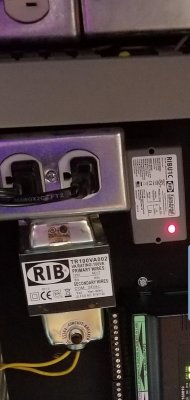How To Build a DIY Expansion Socket
Reasons to use one:
Save your energy bar- A energy bar is a lot more expensive than a single relay, and the relays in energy bars will wear out, especially if you are using them to switch higher loads
Take load off an outlet- If you are using an apex, then then your eb832 outlets have a max of 7 amps or 700w, and 15 amps or 1500 watts for the whole bar. The Old EB8s are 5 or 10 amps per outlet, and 15amps for the bar. You should probably use one of these if you use a large heater, chiller or larger halide lights.
Take load off a circuit- Then your circuit (the actual wiring of your house) probably has a 15- or 20-amp max. So you may want to have your energy bar on one circuit and some of the things it controls on a different circuit, to reduce draw on any one individual circuit. Or maybe you have an item that is more likely to trip a breaker or GFCI, and you want to put that on a different circuit.
Get an extra 2 outlets- if you have a EB823 by using the 2 24v accessory outlets to control the outlet saver.
So we are going to need:
A relay- A RIB2401B Power Relay is currently only $17 on amazon, and it comes with a box. These relays have a 24 Vac/dc/120 Vac Coil, which means we can use either the 24v accessory outlet or a 120v outlet to control it.
A outlet
A weatherproof box- preferably with ½ threaded connections
A liquid tight ½ npt cord connector
A power cord for the outlet- you could also directly wire this with romex or armored cable. Just make sure it is rated for the amps you are going to be drawing- to match the relay and be rated to 20amps, you need a 12gauge cord.
A signal cord- either a 120v cord or the apex 24v accessory cord, depending on which you are using
Construction:
Screw the waterproof box onto the RIB. Then insert the two cords into the strain relief.
Coil side: Take your signal cable and connect the positive or hot side to the correct cable, depending on if you are using 24v DC or 120v AC, and connect the ground or neutral to the coil common wire. Then shove those in the box.
Power side of the outlet: Connect the neutral of the power cord to the neutral side of the outlet, and the ground to the ground. Then we have the hot wire, and this is where the relay intercepts the circuit. The RIB relay comes with NC and NO contacts or wires- for most things we want normally open, or the outlet to fall back to off. So, take the NC wire and cap it off. Then we have to have to decide if we want to connect the hot wire to the common or the NO contact. I am of the opinion that connecting it to the NO contact is safer, as the NC contact is then never live, so I am going to wire it like that. So connect the hot wire of the cord to the NO wire, and connect the common wire to the hot side of the outlet. Then Then put it all into place and put on your cover plate- I made my own by cutting out a different plate because I could only find the cgfi plate covers with a flap cover, which I didn’t want.
That’s it, plug the signal cord into your apex and the power cable into whatever outlet you are using.


















